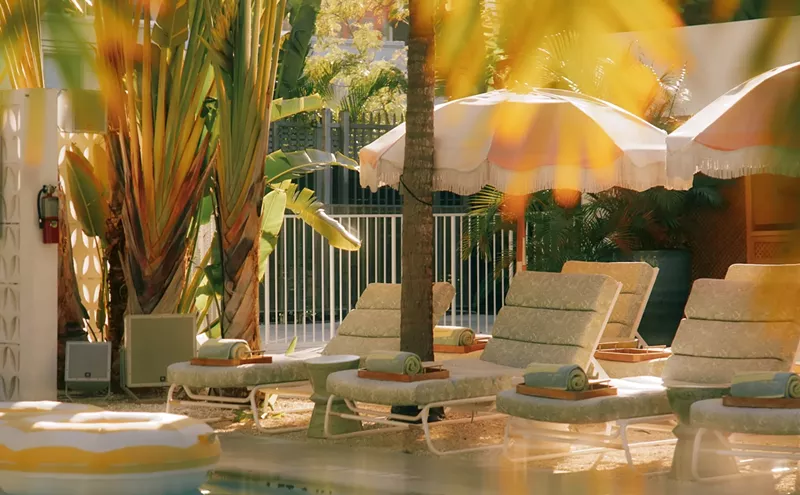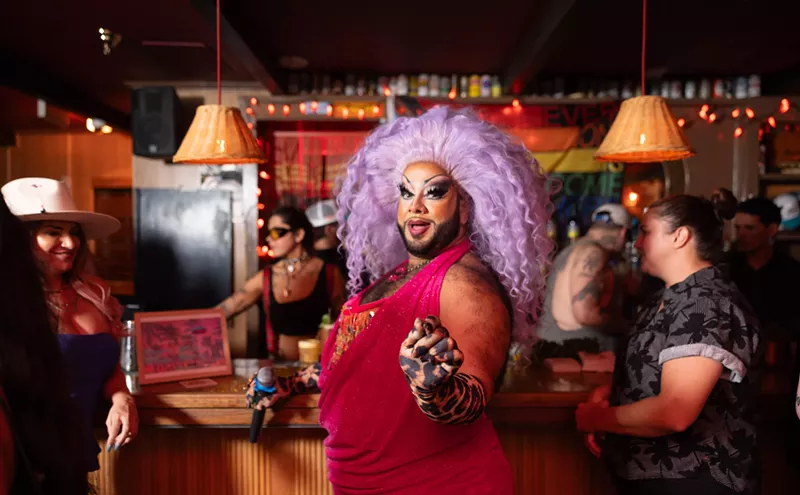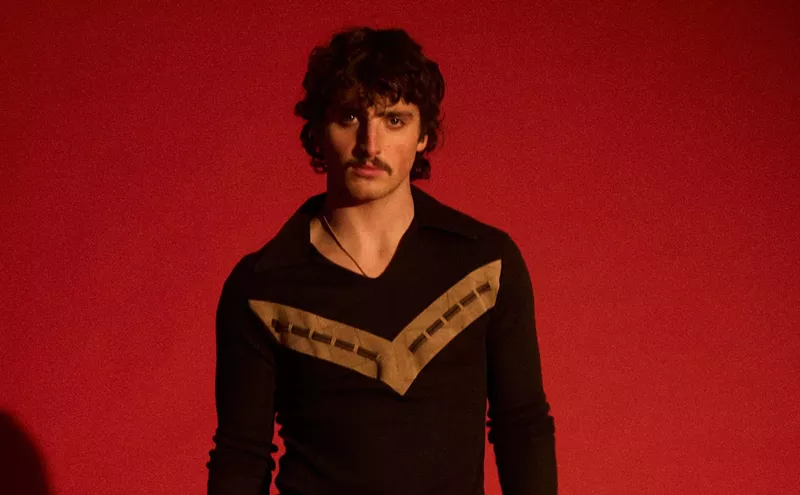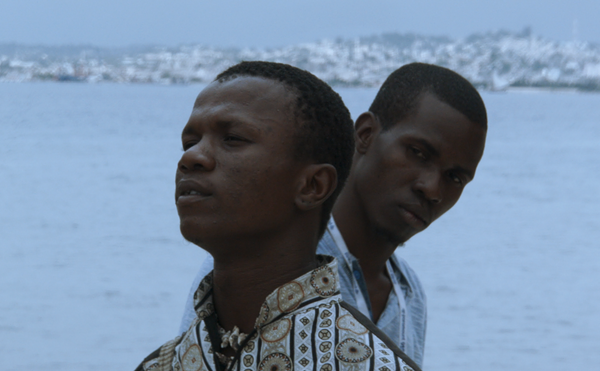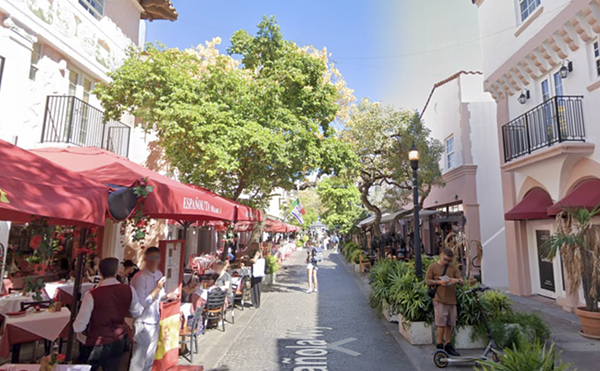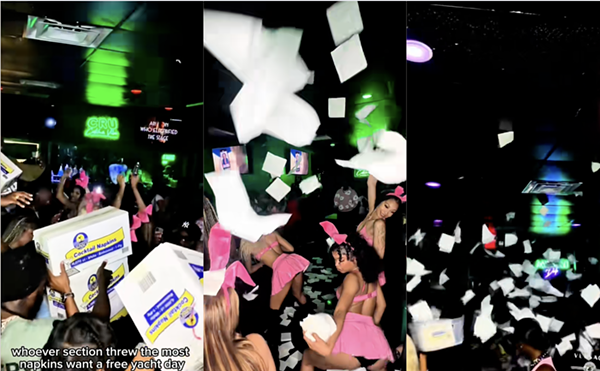The Indestructible Lee Miller" is perhaps an ironic title for NSU Art Museum Fort Lauderdale's latest exhibition. Following the career of Elizabeth "Lee" Miller (1907-77), the Vogue model turned World War II photographer, the exhibit is, in fact, filled with destruction. Black-and-white photographs of the demolition of Europe and the mass of dead bodies left in the war's wake are displayed everywhere in the museum. Though well known in academic circles, Miller's work has yet to find the general audience her elegant and beautifully composed photographs deserve. NSU's exhibition is an attempt to rectify that, and for a photography exhibit in a midsize museum, it's a large, relatively broad, and expansive look at Miller's career.
Miller began her adult life in front of the camera. After a chance encounter with publisher Condé Nast, she ended up on the cover of a magazine he owned: Vogue. Soon she found herself one of the favorite models of leading fashion photographers of the day, including Vogue's legendary art director, Edward Steichen. Miller was a successful model; beautiful and elegant, she embodied the fantasized aesthetic of fashion photography. Antony Penrose, Miller's son and director of the Lee Miller Archives, from which the exhibition is drawn, describes her as a "supermodel."
Her surrealist eye gave her a unique perspective: the grotesque beauty of death.
tweet this
Though Steichen would make Miller's face incredibly famous, he also unwittingly ended her career. In 1928, one of Steichen's portraits of Miller was used in a Kotex advertisement. It was the first ad of its kind, and there was Miller, posing in an elegant evening gown, the words "correct appearance and hygienic comfort" printed above her. By 1929, Miller had packed her bags and left Vogue and Manhattan for Paris.
It's in Paris that "The Indestructible Lee Miller" begins. Much of her early life in front of the camera is written out of the exhibition, which is a shame because the artistry of fashion photography had a lasting impact on her work. Instead, NSU has chosen to begin in the studio of the American expat photographer Man Ray. Though Ray worked in a variety of mediums, he was best known for his sensuous surrealist-infused photography — his commitment to what poet and surrealist leader André Breton called "convulsive beauty." Breton wrote, "Convulsive beauty will be veiled-erotic, fixed-explosive, magic-circumstantial, or it will not be."
The title of the exhibition is drawn from one of Man Ray's assemblages, Indestructible Object (or Object to Be Destroyed) (1923), a metronome with a cutout photo of Miller's eye attached to the pendulum. Ray made the object weeks after he and Miller ended their relationship, and the emotional portrait carried the following instructions: "Cut out the eye from the photograph of one who has been loved but is seen no more." It speaks to the stormy yet collaborative relationship the pair had. But little of that is to be found on the walls of the museum.
It was in Ray's studio that Miller renegotiated her relationship to the camera. At first, the two worked strictly as artist and model, but Miller decided she wanted to be a photographer too. "I would rather make a picture than be one," Penrose says she wrote.
In Ray's darkroom, she learned the fundamentals of photography and, at some point, the two were no longer merely model and artist but collaborators. Disappointingly, the exhibition does little to differentiate between her early career as photographer and model. Neither does it try very hard to extract exactly when she was an active collaborator with Ray and when she was a passive model. It leaves one wishing that the exhibition's curators had delved into the difficult relationship, because it's particularly unusual within the history of art.
Because the curators chose not to use contextual labels (a few provide explanations for individual works), Miller's early photographs seem derivative of her teacher's work — a problem because Man Ray is no minor photographer. Despite this, you can see early hints of Miller's unique eye. Perhaps the best example is Untitled (Exploding Hand) (c. 1930), a photograph that, at first glance, appears to be a woman's hand in a cloud of smoke. Upon closer examination, however, one can discern that the woman's hand is reaching to open a heavily scratched glass door. The door belongs to expensive Parisian perfumer Guerlain, and the smoke is actually a glass door battered by the large diamond rings that graced the hands of Europe's wealthy women.
It has the elegant charm of fashion photography coupled with a surrealist commitment to convulsive beauty — the "magic-circumstantial" aesthetic haunts the photograph. That combination would become the hallmark of Miller's mature work.
Since the exhibit is a survey of Miller's work, her Egyptian period is included. In 1934, she found herself in that country after she wed an Egyptian billionaire, and though the labels claim the photographs from the period have a "surrealist eye," that's a bit of a reach. Largely landscapes, the photographs come across as little more than artsy attempts at touristy snapshots. The handful of Egyptian photos
By 1938, Miller had left Egypt (and her husband) for London and, once there, she returned to her roots and began working as a photographer for British Vogue. By then, World War II had broken out, and the Blitz — the destruction of London — became Miller's backdrop. Her photographs from this period intermingle fashion with the ravages of war. In Model Wearing Digby Morton Suit (1941), a model poses in front of the debris of a bombed-out building. Miller's marriage of the fantasy of fashion with the reality of war is a reminder of not only her surrealist background — that uncanny juxtaposition — but also the degree to which fashion can be truly political.
The war had infiltrated Vogue, and Miller was eager to photograph the rubble. In 1942, she became an accredited war photographer for Vogue and moved across Europe with the frontline of American troops. She was among only a few women photographing the war, and her images are unflinching. Miller's war isn't the stuff of heroic narratives or triumph of freedom. Instead, it's death and destruction; suicides and starvation.
The Bürgermeister's Daughter (1945) is representative of Miller's photography during this time. A young woman lies on a plush velvet couch, a swastika on her arm. Though she looks as if she could be sleeping, she has committed suicide — a measure of preparation and defeat as American troops bore down on Leipzig. This is Miller at her finest, that mixture of fashion photography's elegance, its deep commitment to propagating fantasy, combined with the grotesque realities of World War II Germany. Next to the published photograph hangs one of Miller's contact sheets — the young woman is surrounded by her family members, all of whom have killed themselves — a grotesque inversion of a family portrait documenting the terrible price of ideology.
Not far from
Capturing the destruction of World War II, the thousands of lives lost, and the skeletons that haunted concentration camps was infinitely more disturbing than Breton's convulsive beauty. Miller's Europe is deeply brutalized, but still beautiful.
The mature Miller is unsparing but intoxicating, leaving the viewer wanting more of her. It's not to be found in this exhibition, though, in part because "The Indestructible Lee Miller" is a general survey of her career. But there's enough later Miller, the photographer in full possession of her power, to make the exhibition worth a trip to Fort Lauderdale. Putting a little-known female war photographer on the walls as part of Art Basel programming was a bold decision, and NSU Art Museum is to be commended for the risk.
"The Indestructible Lee Miller"
Through February 14, 2016, at NSU Art Museum Fort Lauderdale, 1 E. Las Olas Blvd., Fort Lauderdale; nsuartmuseum.org. Tuesday through Sunday 11 a.m. to 5 p.m., Thursday to 8 p.m., Sunday noon to 5 p.m. Admission is $12 for adults, $8 for seniors and military, $5 for students, and free for members, children, and the NSU community.




